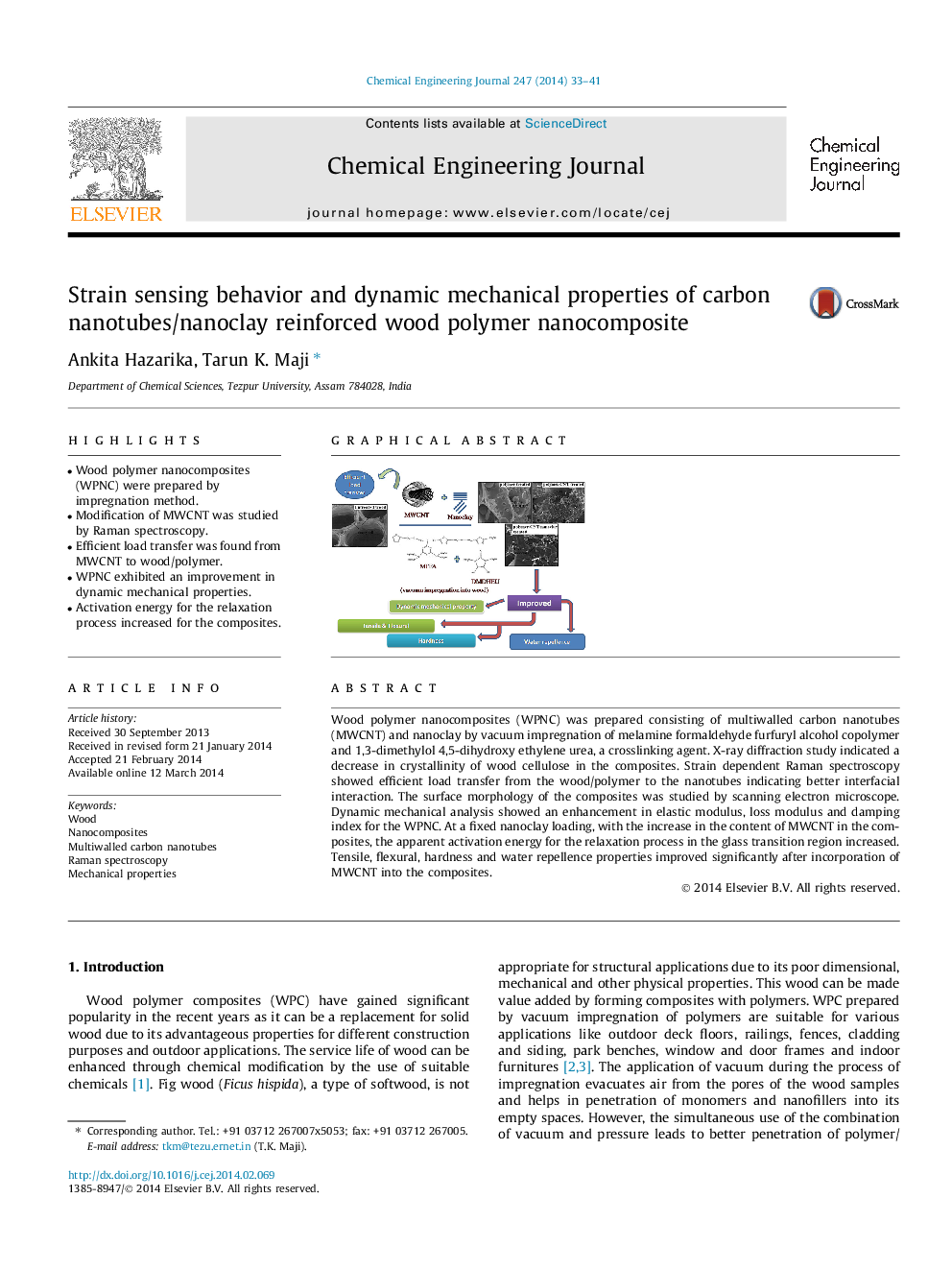| Article ID | Journal | Published Year | Pages | File Type |
|---|---|---|---|---|
| 147556 | Chemical Engineering Journal | 2014 | 9 Pages |
•Wood polymer nanocomposites (WPNC) were prepared by impregnation method.•Modification of MWCNT was studied by Raman spectroscopy.•Efficient load transfer was found from MWCNT to wood/polymer.•WPNC exhibited an improvement in dynamic mechanical properties.•Activation energy for the relaxation process increased for the composites.
Wood polymer nanocomposites (WPNC) was prepared consisting of multiwalled carbon nanotubes (MWCNT) and nanoclay by vacuum impregnation of melamine formaldehyde furfuryl alcohol copolymer and 1,3-dimethylol 4,5-dihydroxy ethylene urea, a crosslinking agent. X-ray diffraction study indicated a decrease in crystallinity of wood cellulose in the composites. Strain dependent Raman spectroscopy showed efficient load transfer from the wood/polymer to the nanotubes indicating better interfacial interaction. The surface morphology of the composites was studied by scanning electron microscope. Dynamic mechanical analysis showed an enhancement in elastic modulus, loss modulus and damping index for the WPNC. At a fixed nanoclay loading, with the increase in the content of MWCNT in the composites, the apparent activation energy for the relaxation process in the glass transition region increased. Tensile, flexural, hardness and water repellence properties improved significantly after incorporation of MWCNT into the composites.
Graphical abstractFigure optionsDownload full-size imageDownload as PowerPoint slide
